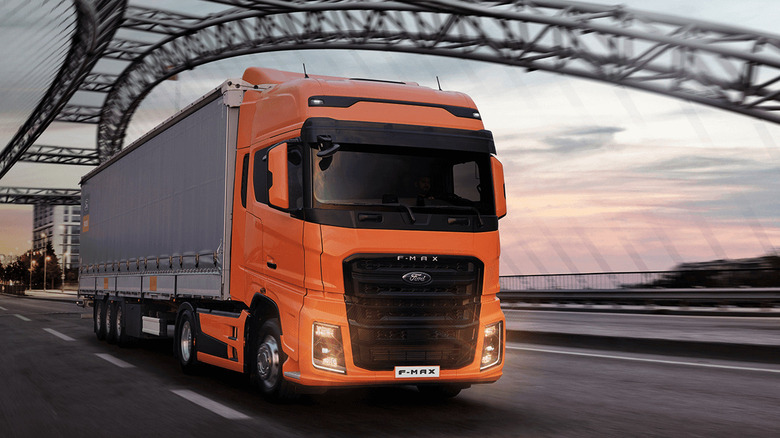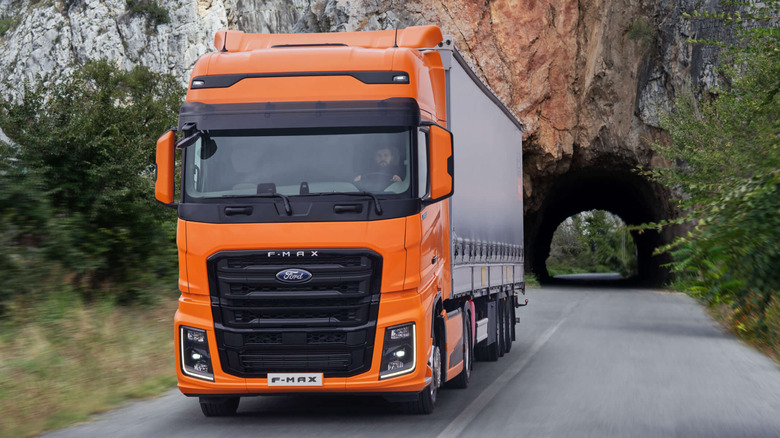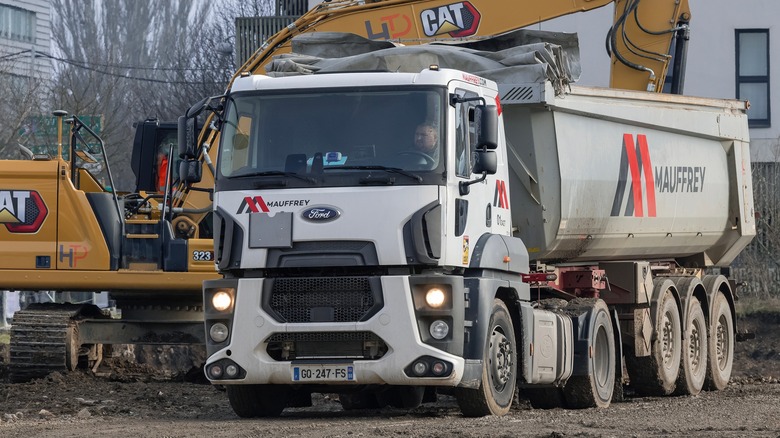Why Ford Stopped Selling Its Semi-Trucks In The USA
When anyone mentions Ford and trucks in the same sentence, the mind naturally conjures up images of models such as the evergreen Ford F-150, the smaller Ranger, or the super cost-conscious Maverick pickup — which we loved from behind the wheel. These are just some of the most popular pickup trucks manufactured by Ford over the decades, in addition to the hard-working Super Duty models, which can tow up to 40,000 pounds when properly equipped to do so.
That's pretty impressive, but these Super Duty models are far from the most capable Ford trucks ever produced. Many might not know it, but Ford once manufactured its own line of semi-trucks for the US market, with two factories – one in Louisville, Kentucky, and the other in Brisbane, Australia – employing over 4,000 people in the mid-1990s. However, due to slow sales in this immensely competitive segment of the marketplace, Ford opted to stop selling semi-trucks in the US and sell its heavy truck business to Freightliner, a major player in the heavy trucking industry. This move allowed Ford to focus on expanding and streamlining its small-to-medium truck and car line, an area in which the blue oval manufacturer enjoyed far more success.
Ford's heavy truck business was losing money
It might not sound like Ford to quit when the going gets tough and to sell up, after all, this is the same manufacturer that decided to take on Ferrari at Le Mans during the 1960s. However, things were starting to look dire for Ford's heavy truck business during the mid-1990s. Between 1995 and 1996 alone, Ford had lost 0.6% of its American market share, while Freightliner gained an additional 3.1%, and boasted an annual revenue of over $5 billion.
The decision then was simple: Ford would sell its heavy truck business to Freightliner for an undisclosed sum, although the deal was rumored to be worth in the region of $200 million. This enabled Freightliner to expand its share of the American market to roughly 38%, in addition to doubling its dealer distribution network. Freightliner wasn't the only winning side here, though, as Ford had freed up valuable factory space to continue manufacturing smaller and more profitable trucks. Ford assured all 3,900 employees at the Kentucky plant that no job cuts were expected as a consequence of this deal.
Blue-oval-badged Ford trucks are still for sale elsewhere across the globe
Just because Ford struggled to shift heavy trucks in the US, that doesn't mean the Blue Oval brand couldn't succeed elsewhere. Ford Trucks Global continues to operate successfully on a large scale, serving customers throughout Europe, the Middle East, and Africa. A recent statement from the firm announced they officially operate in 48 separate international markets and have its sights set on reaching 50.
Ford Trucks Global currently offers a wide range of trucks for sale, but they can easily be broken down into three separate categories; the Tractor Series, Construction Series, and Road Series. The Tractor Series trucks are designed to carry heavy loads over long distances, whereas the Road Series are smaller and nimbler in comparison, and therefore ideal for holding smaller loads on a more local basis. The Construction Series trucks, as you may imagine, are designed to impress on work sites, with everything from tippers through to concrete mixers forming part of the comprehensive current line-up.


